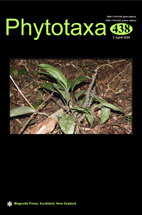Abstract
Solidago ×niederederi Khek (1905: 22) is a hybrid between North-American S. canadensis Linnaeus (1753: 878) and European native S. virgaurea Linnaeus (1753: 880). Solidago canadensis was introduced to Europe in the 17th century (Kowarik 2003). It has spread invasively throughout Europe since the second half of the 19th century (Weber 1998), reaching, besides sites disturbed by human activity, also (semi)natural biotopes, as forest edges, abandoned meadows and field margins which are often inhabited by native S. virgaurea. Their hybrid was discovered for the first time in nature by a local schoolmaster Franz Niedereder in the area of Vorderstoder village (Austria). Niedereder sent a plant material of the assumed hybrid to Eugen Johan Khek (born in 1861, Neuhaus/Jindřichov Hradec; died in 1927, Vienna), the pharmacist and botanist who lived in Vienna since 1889 (Anonymous 1916). Khek described the hybrid species under the name S. ×niederederi in honour of his discoverer (Khek 1905). The protologue indicates that the relevant communication between Niedereder and Khek was going on between July 1900 (when they met for the first time) and February 1905 (when the hybrid’s description was published). Before its description, Khek studied the hybrid for four years and he saw a herbarium material from Niedereder as well as a living material. In the protologue, no particular herbarium specimens or illustrations had been indicated or associated with S. ×niederederi (Khek 1905).

